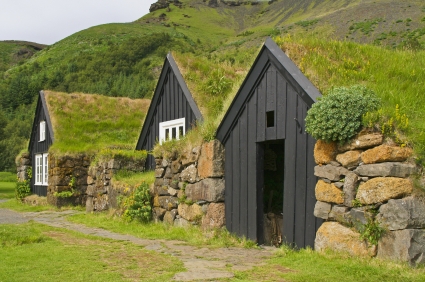 One of the emerging types of housetop covering systems is green roofing. This system isn’t entirely new as centuries ago, Scandinavian houses were built using sod. While many people see it as just another re-emerging trend in housing design, there are actually important benefits to installing green roofing on modern homes.
One of the emerging types of housetop covering systems is green roofing. This system isn’t entirely new as centuries ago, Scandinavian houses were built using sod. While many people see it as just another re-emerging trend in housing design, there are actually important benefits to installing green roofing on modern homes.
Environmental
The use of vegetation effectively promotes biodiversity especially in large cities where much of the area is covered with concrete. Vegetation can serve as a supplementary habitat for birds and other beneficial insects such as bees and butterflies and provide a place to for them to thrive within a busy city.
It also reduces an urban heat island. A heat island effect occurs when the temperature is significantly warmer in an urban area than in the surrounding rural region. It is caused by extensive use of heat retaining materials such as concrete and can negatively impact the ecosystem by increasing ozone or smog. By replacing conventional roofing material with vegetation, excessive warmth from the sun is effectively dissipated instead of being absorbed which result in a decrease of the heat island effect.
The fact that plants take in carbon dioxide and release oxygen means that the system can also contribute to improve air quality of the immediate region. There is also a benefit during the rainy season. With heavy downpours, the layer of vegetation and soil acts as a sponge to retain water rather than it running off directly into a drainage system which can prevent flooding. Contaminants such as metal residue from the runoff are absorbed by the soil so it purifies the rain water before it drains.
Economic
Installing green roofing is not low cost; having such a system can lead to large future savings. One of the biggest advantages of implementing such a system is that the material it uses doesn’t have an expiration date. Unlike conventional shingles which can last only up to 30 years, soil and vegetation can last well up to 100 years depending on the quality of the installation as well as the underlying materials used.
Another economic advantage of green roofing is that it acts as an effective insulator for both hot and cold temperatures. The reason why sod was used in home construction centuries ago was because it acts as an insulator to prevent cold temperature infiltration. The same benefit can also be applied to modern homes. Acting as an insulator, a green roofing system can significantly reduce heating requirements during winter and cooling requirements during summer.
Aesthetic
The most obvious benefit of green roofing is its aesthetics. Among all the different systems, this is the most unique type since it uses live vegetation as a covering. The dominant color is of course green; however, there are additional ways to alter its look with different as well as thickness variations.
Psychological
Ever wondered why nature creates such a calm feeling? It is because humans have a positive psychological reaction to calm color and beauty of nature; it promotes a feeling of tranquility and peace. Living in a busy metropolitan area brings a fast-paced style of life; having a green roof allows for a reconnection back to nature and a more relaxed way of life.
Green roofing is not just another re-emerging trend; it actually provides benefits that can’t be found with other such systems. Hopefully this article has highlighted the priceless benefits that can be achieved with the implementation of a green roofing system!
Are you looking for a roofing Houston contractor to provide service to the top of your building? Schulte Roofing of Navasota services the greater Houston metropolitan area and supplies outstanding services to all their customers!
